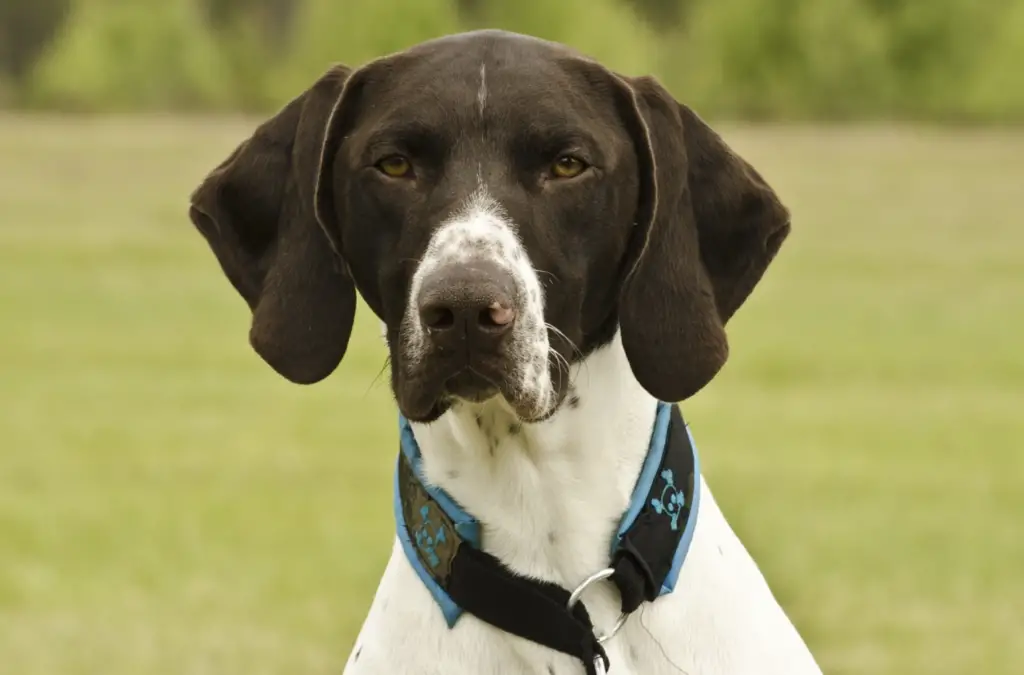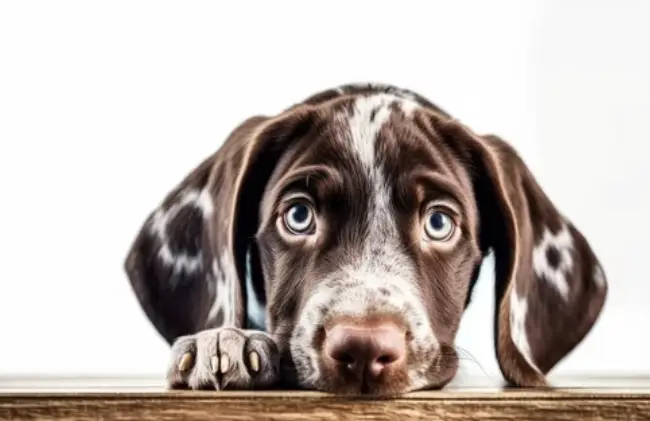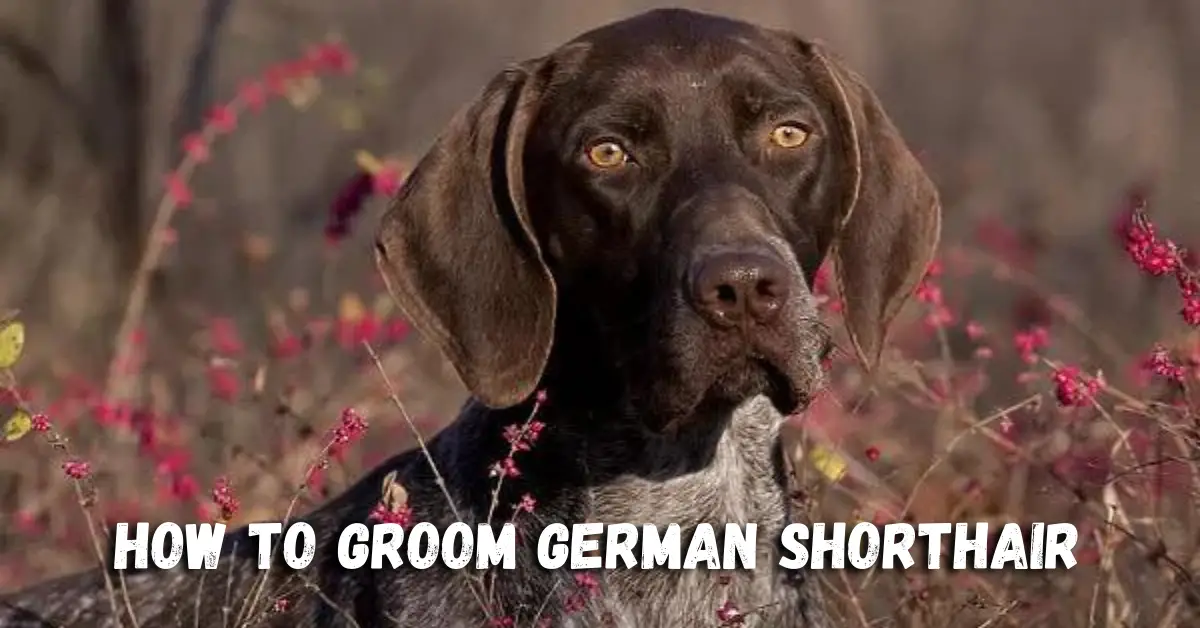German Shorthaired Pointers are beautiful dogs with adventurous personalities. Even though they have short hair, they do shed seasonally, which makes grooming a must.
In this article, we will delve into the essentials of grooming, so you can give your pup the pampering he deserves. Get ready to grab your brush, shampoo, and clipper to give your dog the best spa day.
Importance of Regular Grooming

- Hygiene And Smell- Cleaning and brushing will improve your dog’s hygiene and reduce bad breath.
- Early Detection of Health Issues- Regular grooming can help you detect skin or health issues like lumps so you can cure them at an early stage.
- Flea Treatment- Fleas are a common issue in dogs, which you can avoid through routine bathing and clipping.
- Better Posture- Trimming your dog’s nails can reduce the risk of developing bad posture and bone deformities.
- Lowers The Risk of Ear Infections- Cleaning the dirt buildup in your dog’s ears will put hearing issues at bay.
- Healthy and Shiny Coat- Grooming helps maintain a shiny coat, reduces shedding, and enhances the overall appearance of your dog.
Grooming Techniques
Let’s take a look at the most important grooming techniques that will help your dog stay happy and healthy.
- Brushing
Frequent brushing is essential to maintain the health of a German Shorthair’s skin.
Type of Brush
German Shorthaired Pointers have a naturally short coat and don’t require different types of brushes.
You can use a rubber curry comb-style brush which is a great choice for most German Shorthairs. This rubber-based brush is quite soft and ensures that it does not scratch your dog’s skin. It is simple to clean and enhances the natural oils in your dog’s skin.
You can also go for a shedding blade-type brush for your German Shorthair. It has a metal strip that helps to remove the fur deeper in the coat.
However, it’s important to be gentle if you use this brush. Watch out for the less padded areas of your dog, such as hips and ribs, to avoid discomfort.
Process
Brushing a German Shorthair is relatively easy. You can either use small sections of his coat or do it in slow circular motions. Even if your dog hates getting brushed, he will surely enjoy this method as it feels like a massage.
To complete the session, use a soft bristle brush to remove any loose fur.
Frequency
Brushing a German Shorthair’s fur every week or two is ideal. It will be helpful, especially if your dog has a thicker coat or is undergoing seasonal shedding.
- Bathing And Drying
Bathing not only keeps your dog hygienic but also minimizes the bundle of hair in your house.
Type of Shampoo And Conditioner
When bathing your dog, choose a shampoo and conditioner that moisturizes his skin and prevents it from getting dry.
If your German Shorthair has sensitive skin, it’s best to use a hypo-allergenic or a medicated shampoo, depending on his needs. Whereas, if he has normal skin, you can choose a natural fragrant shampoo and conditioner.
Tip: You can also opt for a shampoo that has honey and oats to add extra silk and shine to your dog’s fur.
Process
Start by covering your dog with water and apply shampoo from head & fur, all the way to its tail. Although GSPs have short hair, you will have to use your fingers to create lather because their coat is tight and water-repellent.
Rinse him with water and then repeat the process to get rid of excess hair and ensure a thorough clean. After the second shampoo and wash, go ahead to apply the conditioner. You can also leave the conditioner on the coat for some time to get extra smooth hair.
Frequency
A German Shorthair should be bathed at least two times a month or even more regularly if necessary.
Drying
Once your doggo finishes bathing, it’s time to dry him off. Since these are a shorthair breed, you can use a towel or let them air dry. Let your dog shake off the excess water and then dab its body.
If you wish to reduce his shedding, the quickest way to blow dry him is through a pet-specific high-power hair dryer. Keep a distance of 30cm from his skin and only use the warm setting to prevent skin irritation.

- Nail Trimming
Nails that are too long can interfere with your dog’s walking ability and to prevent that, it’s essential to keep the nails trimmed. No one wants to end up with scratches while playing with their pet.
Type of Nail Trimmer
The most common tool for trimming nails is a pair of dog nail clippers. Another great option is a nail grinder, such as a Dremel tool, which can prevent the nails from quickly growing.
Process
To avoid cutting the skin area, first identify where it is by looking for the pink part of the nail. After that, only cut the part of the nail that extends beyond the skin. If you can’t find it, try to cut the nails in small portions until it’s visible. If you are using a nail grinder, grind the nail down carefully while petting your dog so it stays calm.
Frequency
German Shorthaired Pointers need their nails trimmed once every week or two to keep up with the growth.
- Ear Cleaning
German Shorthairs are prone to ear infections due to their floppy ears and for that reason, ear cleaning becomes crucial.
What to Use
Veterinarians recommend using dog ear cleansers like these to prevent your dog from potential ear infections. Furthermore, keep an eye on your dog’s ears for any signs of redness or irritation.
Process
Dogs can get irritated by getting a small piece of rock, grass seed, or water into their ears. You can easily clean your dog’s ear by squeezing a few drops of ear cleaner in his ear canal. Use a dry cotton ball to clean any waste or residual cleanser from his ear. Make sure you only go as deep as you can see and not any further to avoid injuries.
Frequency
German Shorthairs require monthly ear cleaning to maintain good health. Also, if you take your dog swimming often, always clean his ears after returning.
- Dental Care
Good oral hygiene habits can lower the risk of periodontal diseases and give your dog a fresh breath.
What to Use
You can use canine toothpaste with flavors like chicken or beef, as human toothpaste contains harmful chemicals. You can also give your dog mouthwashes, gels, and special treats made to promote gum health.
Process
If your German Shorthair is a puppy, use your fingers to give him quick 1-2 rubs, and then gradually increase the motion. However, for an adult Shorthair, you should only use a toothbrush.
Carefully brush the area where the teeth and gum meet as it accumulates most of the plaque. While brushing your dog’s teeth you should also look out for any dental problems, such as a cavity or split teeth.
Frequency
Brush your dog’s teeth once a week and take him to the vet for dental checkups twice a year.
Bonus Tips:
- Use paw balms weekly to make his paws soft and smooth.
- Use blunt scissors to cut excessive hair growth.
- Use aloe hydrating sprays to prevent dandruff.
- Avoid getting water in the eyes, ears, or nose during baths.
Conclusion
In conclusion, grooming a German Shorthair requires time and patience, but it’s an important part of keeping your pet healthy and happy. Regular brushing, bathing, and trimming will help prevent mats and tangles, as well as promote healthy skin and coat. It’s also essential to keep your dog’s nails trimmed, ears clean, and teeth brushed to prevent infections and other health issues.
With proper grooming techniques, you can help your German Shorthair look and feel its best. Remember to be gentle and patient, and seek the help of a professional groomer if needed. Taking care of your pet’s grooming needs is an excellent way to show your love and affection, and a well-groomed German Shorthair is a beautiful sight to behold.


